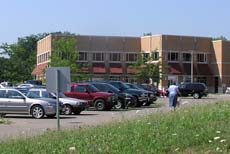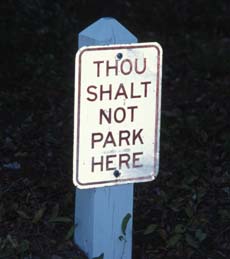New Urbanist transportation

The local commercial center in the New Urbanist development Middleton Hills, in Wisconsin does not fill enough of a household's weekly needs.

Sign in Seaside, Florida
The norms for automobile use in suburban New Urbanist developments includes the expectation that cars not have to be used for local needs. What is especially significant, though, is that those local needs will be differently defined in a New Urbanist development than they would have been in either a standard subdivision that would have no local shopping, or in an older small town. Unlike the relatively complete commercial centers once found in small towns, walkable suburban New Urbanist commercial centers (the few that exist so far) meet only limited needs. The differentiation of shopping and transportation uses will always be a feature of these towns. But the same is happening to older small towns as well.
Celebration's commercial center is well developed; it offers small groceries, boutique clothing, home decorations, books, real estate, legal services, but there is no supermarket, no hardware or home repair, no car maintenance, no pharmacy. The strip just outside the town is more efficient at these services. As the town gets bigger retail Darwinism may produce services more aimed at residents' daily needs, but the efficiencies of the mall and the big box, and soon the Internet, will not go away. At Kentlands, on the other hand, there is an almost complete mix of retail, because the town commercial center sits next to a big box power center that was developed with the town. Residents have much less need to travel outside the town.